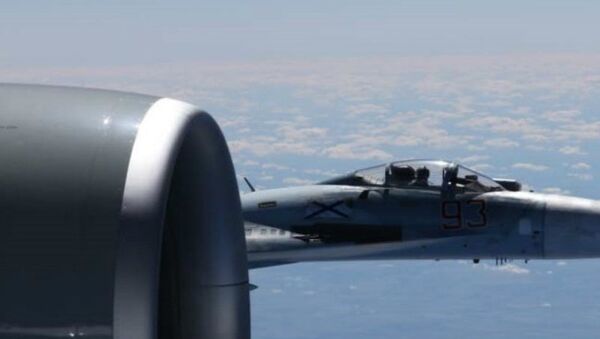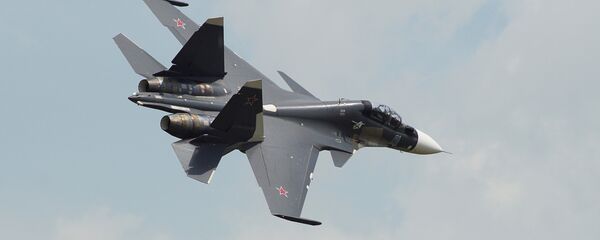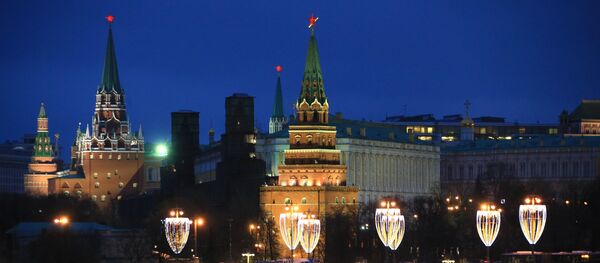Lt. Col. Michelle Baldanza, a spokeswoman for the Pentagon, claimed that the Russian warplane came within five feet of the US spy plane, forcing it to veer off course and end its mission prematurely.
She added that the interception was unsafe because the Russian aircraft crossed in front of the Aries, exposing the American plane to the turbulence left in the Su-27's wake. As a result, the Aries experienced "a 15-degree roll and violent turbulence."
Another statement came courtesy of US Naval Forces Europe-Africa, corroborating the Pentagon's allegations."On Jan. 29, 2018, a US EP-3 Aries aircraft flying in international airspace over the Black Sea was intercepted by a Russian Su-27," the Monday press release said.
"This interaction was determined to be unsafe due to the Su-27 closing to within five feet and crossing directly through the EP-3's flight path, causing the EP-3 to fly through the Su-27's jet wash. The duration of the intercept lasted two hours and 40 minutes."
The Russian Defense Ministry dismissed the allegations, saying that they took all necessary precautions to avoid a dangerous situation during the intercept.
"The crew of the fighter jet reported the identification of an American reconnaissance aircraft and accompanied the spy plane, preventing it from violating the Russian airspace while observing all necessary security measures," the ministry said in a statement.
"The Russian Su-27 fighter jet conducted the entire flight in strict accordance with international rules of the use of airspace. No extraordinary situations occurred during the intercept," the statement added.
Meanwhile, the US State Department called on Russia to avoid approaching to US aircraft in order to prevent further dangerous situations.
"While the US aircraft was operating under international law, the Russian side was flagrantly violating existing agreements and international law, in this case the 1972 Agreement for the Prevention of Incidents On and Over the High Seas (INCSEA)… We call on Russia to cease these unsafe actions that increase the risk of miscalculation, danger to aircrew on both sides, and midair collisions," State Department spokesperson Heather Nauert said in a statement following Monday incident over the Black Sea.
Nauert called the incident "the latest example of Russian military activities disregarding international norms and agreements."
The incident took place in international skies over the Black Sea, just miles from Russian airspace. NATO and Russia both maintain significant military presences in the region.
Earlier reports of the incident published by CNN identified the planes involved as a P-3 Orion and an Su-30. The statements from both nations' defense ministries have proven that claim to be seemingly erroneous.
In December, a pair of US F-22s intercepted Russian Su-25 attack jets in the skies over wartorn Syria. As with the Black Sea incident, both nations offered differing accounts of the event: the US claimed to have intercepted the Su-25s after they crossed a de-confliction line multiple times, while Moscow claimed that their planes did no such thing and the F-22s intercepted them illegally.





